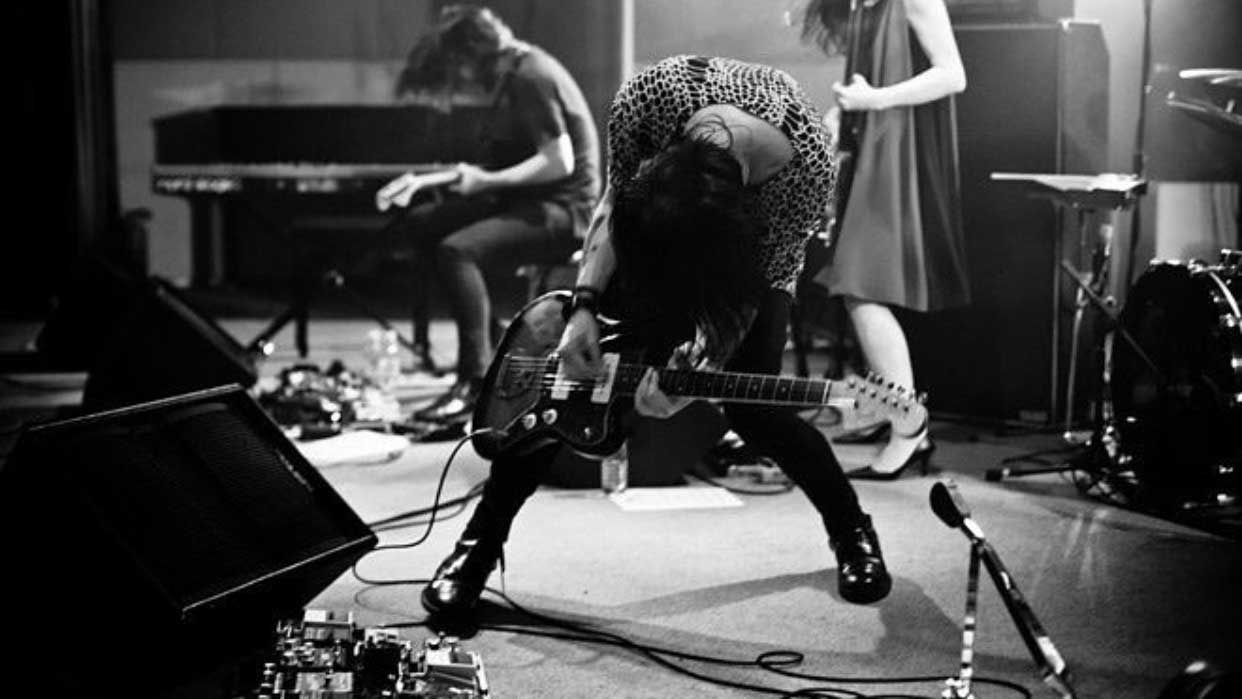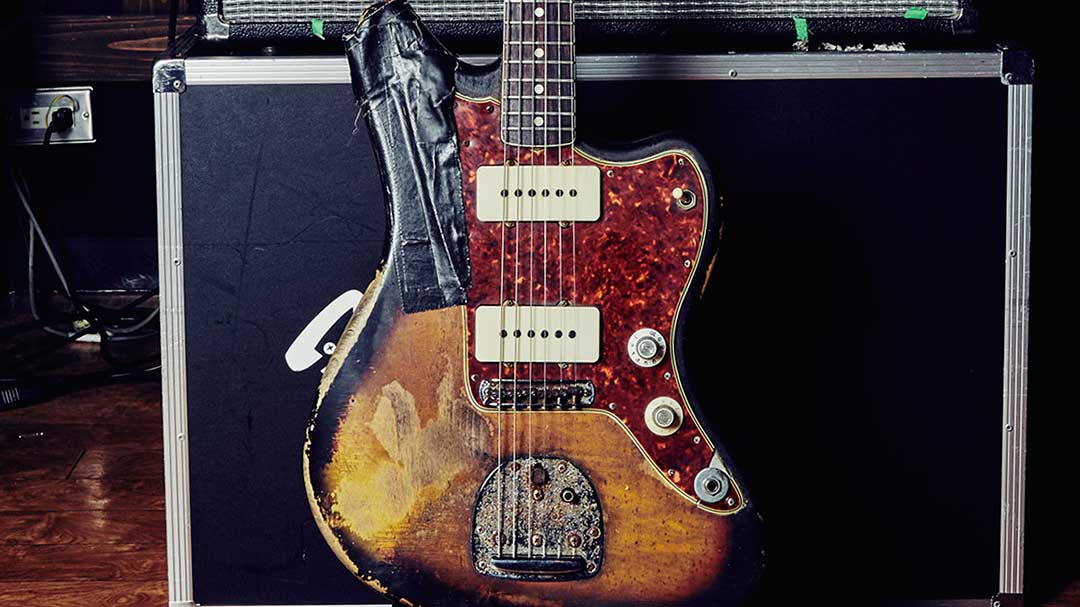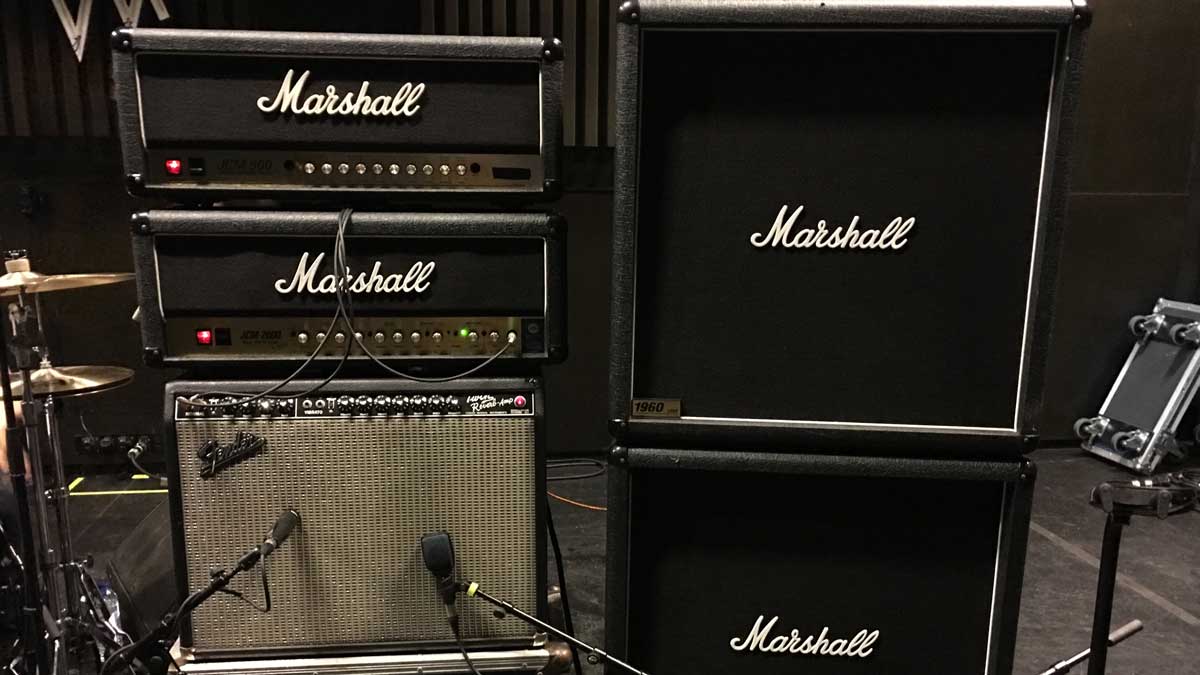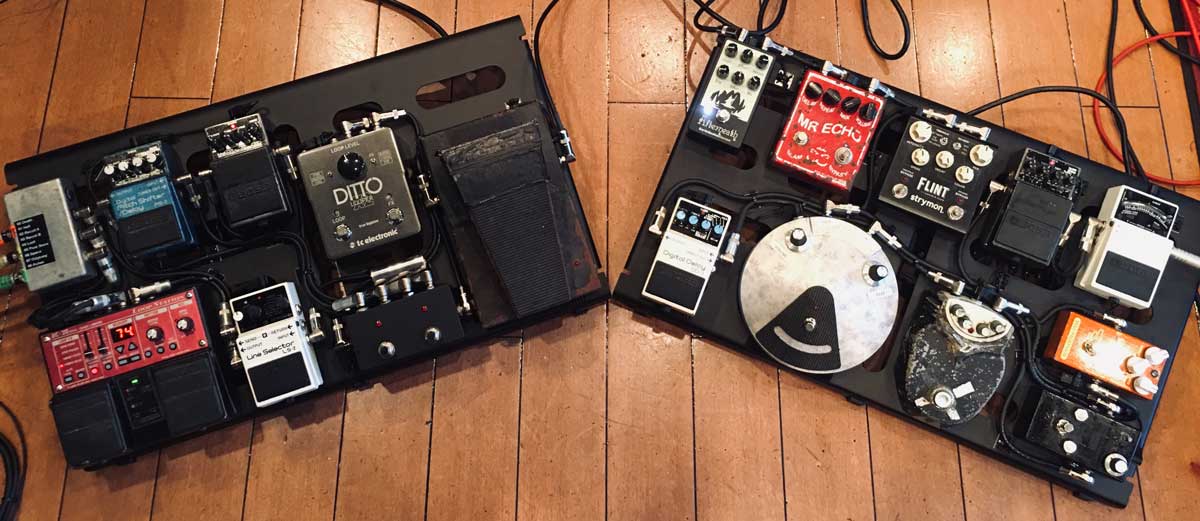Rig tour: MONO’s Takaakira ‘Taka’ Goto
The Japanese post-rock wizard reveals his trusted guitars, amps and pedals

With a career spanning 20 years, Japan’s MONO have cultivated a reputation as one of the pioneers of post-rock as we know it.
Yet 10 albums in, their emotive weight shows no sign of lightening; new album Nowhere Now Here is as chaotically cathartic as the instrumental four-piece have ever been, aided by legendary producer Steve Albini behind the desk.
In advance of the release, the band’s Takaakira ‘Taka’ Goto let us in on the gear he uses to channel the band’s mercurial tones for recording and live dates, including his long-serving Jazzmaster, dual-amp rig, and fuzz and delay-heavy pedalboard.
Fender Jazzmaster 1966

“I purchased this guitar 25 years ago in Tokyo at a place called Hyper Guitars. This 1966 Jazzmaster model has a neck binding, and this is the model that Fender manufactured for only one year.
“Originally, I used to play Fender's Stratocaster so I personally found this model really easy to play. The sound this model makes has more dynamic range compared to standard Jazzmasters as well. I really like how it creates a soft warm sound if I play softly, and how it creates a solid sound if I play hard.
All of MONO’s studio albums were recorded with the main Jazzmaster alone
“I have 2 of the same model. The main one is tuned normally, and the other, I have it tuned down to DGCFAD.
“Fundamentally, I also have not altered the guitars because I'm 100% satisfied as they are. But they're old guitars, so the parts that broke during the hard tours have been fixed. Nothing more.
Want all the hottest music and gear news, reviews, deals, features and more, direct to your inbox? Sign up here.
“All of MONO’s studio albums were recorded with the main guitar alone.”
Amps

Fender Twin Reverb Blackface Reissue / Marshall JCM2000 100W and Marshall Speaker Cabinet 1960B
“I generally use the Fender Twin Reverb as our main amp, and I additionally use Marshall on the loud parts of the songs. The reason I chose these two amps are simply because they were at the practice studio when we started the band in 1999.
We're an instrumental band, so the frequencies that can replace vocalists are very important. Otherwise, it'd be like karaoke
“But even when we started to tour the world, we could generally always get access to them anywhere in the world so we feel lucky about it. If they were some special amps, this won't be the case, you know.
“I use both amps for clean sounds. I really like how Fender's midrange is really beautiful and warm. We're an instrumental band, so the frequencies that can replace vocalists are very important. Otherwise, it'd be like karaoke.
“The Marshall amp, on the other hand, is completely opposite. I have it set up to make both the low- and high-ends metallic.
“When I use the fuzz pedal on both the Fender and the Marshall, it’s a perfect full-range and a really crazy sound. I like feeling the sound pressure in my back.”
Pedalboard
- Boss TU-3
- Boss RV-5
- Mad Professor Sweet Honey Overdrive
- Custom Boost pedal
- Modified Danelectro Fab Tone
- Modified Jim Dunlop Fuzz Face
- Boss DD-3
- Strymon FLINT
- SIB! MR ECHO
- EarthQuaker Devices Afterneath
- Morley Wah
- TC Electronic Ditto X2 Looper
- Custom AB box
- Boss RV-3
- Boss PS-2
- Boss LS-2
- Boss RC-30 Loop Station
- Custom output isolator
- Mono pedalboards
“I use a bunch of pedals. As we created more albums, the number of pedals I use increased, but generally the main three are reverb, fuzz and delay. Especially Boss's DD-3 Delay, which is a pedal I've been using now for over 30 years and one of my favourites.
“Usually, I always have the delay time and feedback level set to one o'clock. Sometimes, depending on the song, I change the level of delay, but I generally play all the songs with the same settings. The DD-3s that were released from the late-90s to the early-2000s are fantastic, because they create this tone that's in between digital and analogue. I think I've purchased around 40 units now, including my spare.
“I have Boss's RV-5 Reverb plugged in next to my tuner. Generally, you plug them after drive pedals but I instead plug it before. The sound especially becomes really crazy when you use fuzz after reverb. That really is like a wall of sound.
“The Mad Professor Sweet Honey Overdrive gives you a sound that's like a vintage amp in a really good condition. You can change the tone and drive level with the volume of the guitar and it perfectly interlocks the delicate tone and dynamics when I play with the tip of my fingers.
“For fuzz, I use both the Danelectro Fab Tone and Jim Dunlop Fuzz Face. You can create an awesome dirty and wild sound, and on top of it all, the volume is overwhelmingly loud. I sometimes use two pedals at the same time. They create this cracking sound that feels like it's going to break the cone paper of speakers, and it's awesome. Both of them have been modified by my guitar technician Yuichiro Hosokawa / CULT.
“The Strymon Flint's feedback sound is like a pad and it's really beautiful. You can create a very cinematic world with it. I used it on the ninth album Requiem For Hell for songs like the title track and The Last Scene.
“The SIB! MR ECHO is an analogue delay. I mainly use it when I want to create noise. I really like how it creates a snowstorm-like worldview. I used it a lot on the fourth album You Are There.
“I started to use EarthQuaker Devices Afterneath from the new album Nowhere Now Here, which will be released next year. You can create a sound that's like a grand piano's sustain pedal. When I first tried the pedal, I instantly got many ideas for songs. It's a really new musical and unique pedal, and I'm a huge fan of it.
When you push down the wah, it creates this hysterical sound that's almost like breaking your eardrums
“For the Morley Wah pedal, I don't use it like how you're meant to generally use wah. The sensation of it is like a parametric equalizer or filter, and I use it to control my frequencies. My favourite thing about it is when you push down the wah, it creates this hysterical sound that's almost like breaking your eardrums.
“For the TC Electronic Ditto X2 Looper, I use it as a looper of course, but the main reason is that I especially liked the functionality of being able to slow down the rotation speed of a tape by half. I also use it for reverse, and depending on your ideas, you can express the sound in many ways, so I really like it.
“I use the Boss RV-3 in reverb + delay mode. I sometimes use it with the RV-5 as well, which I explained earlier. When you double the reverb + delay, you can create this fantasy-like sound.
“The Boss PS-2 I use was purchased almost 30 years ago and it's actually been broken for many years now. It can only create an uncontrollable sound, so I just use it as a dedicated machine for noise. I used it on many songs like Com(?), Pure As Snow (Trails Of The Winter Storm), After You Comes The Flood and more.
“I started to use Mono Pedalboards from 2018 tours. I really like how they're extremely lightweight yet tough and easy to use. My guitar technician Yuichiro Hosokawa / CULT also takes care of the wiring as well as system production. All the cables are handmade and he always answers my requests 100%. He's a great partner I can trust.”
Nowhere Now Here is out on 25 January via Pelagic Records.
Mike has been Editor-in-Chief of GuitarWorld.com since 2019, and an offset fiend and recovering pedal addict for far longer. He has a master's degree in journalism from Cardiff University, and 15 years' experience writing and editing for guitar publications including MusicRadar, Total Guitar and Guitarist, as well as 20 years of recording and live experience in original and function bands. During his career, he has interviewed the likes of John Frusciante, Chris Cornell, Tom Morello, Matt Bellamy, Kirk Hammett, Jerry Cantrell, Joe Satriani, Tom DeLonge, Radiohead's Ed O'Brien, Polyphia, Tosin Abasi, Yvette Young and many more. His writing also appears in the The Cambridge Companion to the Electric Guitar. In his free time, you'll find him making progressive instrumental rock as Maebe.

